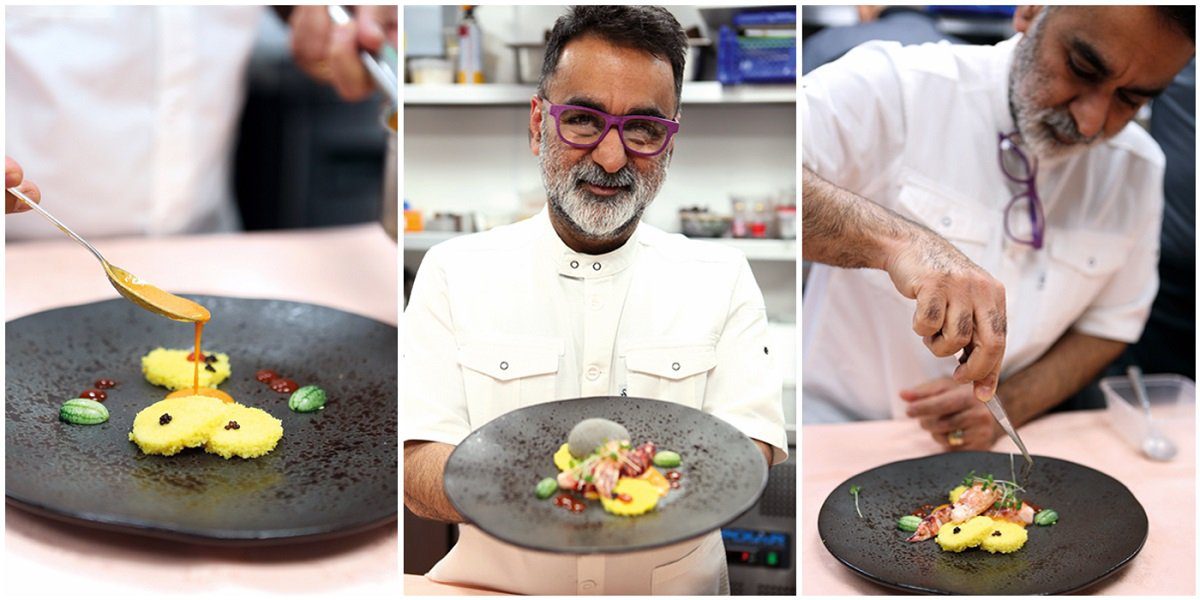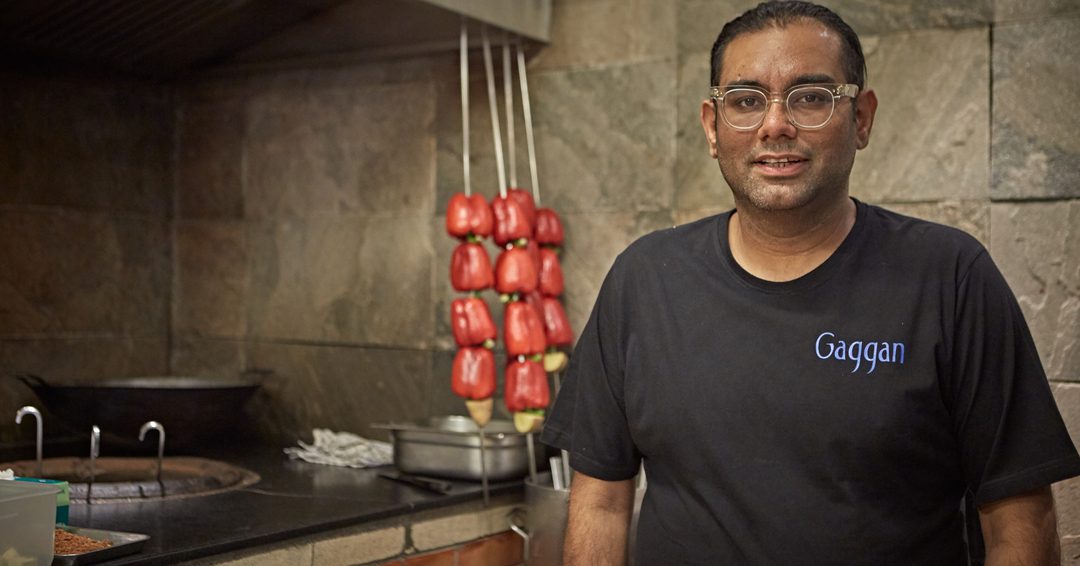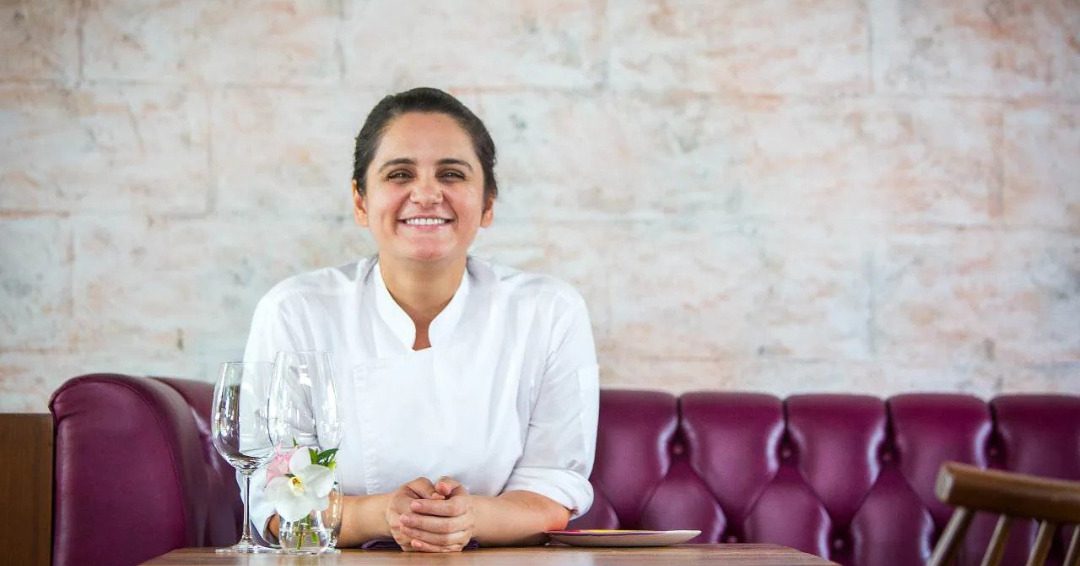(September 25, 2021) With a genial smile, deft skills in the kitchen and impeccable understanding of flavors and techniques, Chef Atul Kochhar has been winning hearts and palates across the world for decades now. One of the first Indians to bag a Michelin star back in 2001, Kochhar has been a force to reckon with in the culinary circuit with several hugely successful restaurants such as Tamarind, Kanishka, Hawkyns, Indian Essence, and Sindhu to name a few.
With two Michelin stars to his credit, a deep understanding of Indian flavors and cuisine, Kochhar has over the years been considered as a high priest of progressive, edgy Indian food that receives his signature Kochhar touch. And it isn’t just naans, tikka masalas, and butter chicken that curry favor in his restaurants… Kochhar also turns the spotlight on lesser-known Indian cuisines from the Northeast. He tells stories with his food… from the puri aloo tacos to dalim shakarkandhi and the spiced curry leaf martini, his food speaks volumes of India’s culinary heritage and flavors.

Chef Atul Kochhar in his kitchen
Indian roots
Born and brought up in Jamshedpur, Kochhar’s introduction to the intricacies of the culinary world began early. As a child he would often visit the local markets with his father, a caterer, who would introduce him to the art of identifying fresh local ingredients. Kochhar found the colors and smells vibrant and exciting and these trips were some of the highlights of his week. Back home, it was his mother’s kitchen that drew him in. In an interview with the St Regis Magazine, Kochhar says, “I have so many memories of my mother in the kitchen, cooking and showing me how to prepare dishes.” One of his favorite dishes till date is rogan josh, which he says, his mother would make the best. “It’s something my whole family used to enjoy together around the dinner table, so it has a sense of nostalgia for me as well.”
And thanks to @ChefTomKerridge and ALL the chefs, home economists, front of house teams, bar gurus and recycling ninjas that made @Pubinthepark_ the tastiest festival on the planet! And look at those enthusiastic eyes @chefatulkochhar! 😳 pic.twitter.com/llOfCKh0F2
— Andy Clarke (@TVsAndyClarke) September 21, 2021
It was but natural that he chose to be a chef. After his diploma in Hotel Management from The Institute of Hotel Management in Chennai, Kochhar embarked on his culinary journey with The Oberoi Group of Hotels in 1989. It was here that he picked up the nuances of Indian cooking and continued to do so until he was hired by a wealthy Delhi family to open Tamarind in London in 1993-94. Back then, the London Indian food scene was dead except for the curry houses.
Coming into his own
Tamarind in Mayfair offered a heavily Punjabi menu and worked fairly well; but Kochhar got his first dose of reality check from his father, who’d come over to try his food. Scathing in his remarks, he told Kochhar that the food was neither authentically Indian nor particularly tasty. This, Kochhar says, led him to develop his own style of cooking. He began exploring local ingredients and began experimenting with local fish like salmon, sea bass and other British fish. He also switched to using English lamb over goat and so on. And it clicked. He became one of the first Indian chefs who worked hard to take Indian food global. In 2001, Tamarind won a Michelin star, Atul’s first. That same year, Vineet Bhatia had also bagged a Michelin for his restaurant Rasoi, also in London. With this, Kochhar’s place was firmly established in the culinary world.

Nine years later he moved out to set up Benares, his own restaurant in partnership with someone from the financial services industry in London’s Berkeley Square. However, things hit a roadblock when the partners ran out of money and opened an unfinished restaurant. A couple of years later things finally stabilized and by then Kochhar too refined his style of cooking and moved away from only Punjabi flavors to offer his own take on food from the rest of India. It worked and Benares too bagged a Michelin in 2007, while Kochhar became a regular on television, appearing on shows such as Curry, Kochhar’s Spice Kitchen, Market Kitchen, Great British Menu and Million Pound Menu. He also began pairing fine wine with Indian food… he would travel to vineyards himself and offer to cook for the owners and then ask them to find wines that would pair with his food. Wine makers also began making special blends to suit the masala heavy Indian food.
Soon other restaurants followed: Sindhu, Hawkyns, Indian Essence and Kanishka (where he focuses on food from Northeast India).

Atul Kochhar in action
A costly misstep
Things were going well until 2018, when an unthinking tweet by Kochhar sparked a global outrage. Kochhar, who’d sent out the tweet about an episode of Priyanka Chopra’s show Quantico, created a Twitter storm and people thought it was anti-Islamic in tone. Though Kochhar issued unconditional apologies, the damage was done. As the uproar escalated, the hotel where his Dubai restaurant was located ended their association with the chef, and he was also forced out of Benares by his partner.
However, nothing keeps a good chef down and Kochhar bounced back with a new partner when he launched Kanishka in 2019. By early 2021 he also returned to India with his new restaurant Saga. Spread across two levels overlooking the Golf Course Road in Gurugram, the restaurant is dedicated to storytellers who engage diners with the backstory of every dish and cocktail on the menu. The menu has reimagined recipes from different regions that have gone global… like the Ayam Tikka which has hints of Malay garam masala.
Giving Back
The Global Indian that he is, Kochhar has actively been involved in charities like Barnardo’s, Great Ormond Street Hospital, and Save the Children. He is an ambassador for Find Your Feet, an NGO that supports poverty stricken rural areas by developing poverty-relief programs to encourage self-sufficiency and independence.





